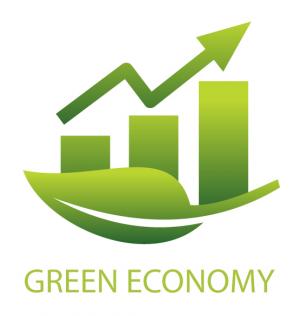Sustainable Tourism Development
Description
Source: Government of Cape Verde
Cape Verde wishes to be a sustainable tourism destination, which ensures the satisfaction of the needs of both local communities and tourists and respect for natural and cultural values.
Cape Verde is a ten islands country in the Atlantic Ocean with over 1,000 km of coastline. With still a large portion of the country with breathtaking virgin landscapes and unspoilt culture and, with a strong and mounting mass tourism pressure and skyrocketing coastal land speculation, the country is at a tipping point.
As tourism is relatively recent in Cape Verde it had its beginnings in the years 1990-1995 - it has become a commitment for the government and a major motor of the economy. Currently, it is one of the sectors that contributes most to the GDP (about 19%) with an upward trend. The impacts of insufficiently efficient planned tourism development could cause significant economic, social and environmental damages.
One primary goal of the capverdean government is to ensure that tourism keeps within the margins of its fragile ecosystems and that economic growth spreads to the poorest sectors of the population. In this sense, the government wants to maximize the beneficial effects of this growing sector with a properly planning and controlling.
In the last years many initiatives have been developed ranging from accelerating and supporting the elaboration of land-use ordnance and protected area management plans and their guidance and integration on economic development plans to increasing the share of ecotourism and well managed nature-based tourism in the country.
The Government has already launched the first National Tourism Master Plan and a Code of Conduct defining objectives for managing resources and competitiveness within the sector, which drive the archipelago's economy and include measures for saving water, management of power resources, use of renewable energy, Waste and waste water treatment and optimization of environmental resources.
In the course of the program 100% renewable energy, a zero emissions concept for tourism is about to be developed which should be brought close to the tourism stakeholders of the mass tourist islands of Sal and Boa Vista. It will also constitute the basis for the sustainable tourism promoted for all islands.
SDGS & Targets
Goal 8
Promote sustained, inclusive and sustainable economic growth, full and productive employment and decent work for all
8.1
8.1.1
Annual growth rate of real GDP per capita
8.2
Achieve higher levels of economic productivity through diversification, technological upgrading and innovation, including through a focus on high-value added and labour-intensive sectors
8.2.1
Annual growth rate of real GDP per employed person
8.3
Promote development-oriented policies that support productive activities, decent job creation, entrepreneurship, creativity and innovation, and encourage the formalization and growth of micro-, small- and medium-sized enterprises, including through access to financial services
8.3.1
Proportion of informal employment in total employment, by sector and sex
8.4
Improve progressively, through 2030, global resource efficiency in consumption and production and endeavour to decouple economic growth from environmental degradation, in accordance with the 10-Year Framework of Programmes on Sustainable Consumption and Production, with developed countries taking the lead
8.4.1
Material footprint, material footprint per capita, and material footprint per GDP
8.4.2
Domestic material consumption, domestic material consumption per capita, and domestic material consumption per GDP
8.5
8.5.1
Average hourly earnings of female and male employees, by occupation, age and persons with disabilities
8.5.2
Unemployment rate, by sex, age and persons with disabilities
8.6
8.6.1
Proportion of youth (aged 15-24 years) not in education, employment or training
8.7
Take immediate and effective measures to eradicate forced labour, end modern slavery and human trafficking and secure the prohibition and elimination of the worst forms of child labour, including recruitment and use of child soldiers, and by 2025 end child labour in all its forms
8.7.1
Proportion and number of children aged 5‑17 years engaged in child labour, by sex and age
8.8
Protect labour rights and promote safe and secure working environments for all workers, including migrant workers, in particular women migrants, and those in precarious employment
8.8.1
Fatal and non-fatal occupational injuries per 100,000 workers, by sex and migrant status
8.8.2
Level of national compliance with labour rights (freedom of association and collective bargaining) based on International Labour Organization (ILO) textual sources and national legislation, by sex and migrant status
8.9
By 2030, devise and implement policies to promote sustainable tourism that creates jobs and promotes local culture and products
8.9.1
Tourism direct GDP as a proportion of total GDP and in growth rate
8.10
Strengthen the capacity of domestic financial institutions to encourage and expand access to banking, insurance and financial services for all
8.10.1
(a) Number of commercial bank branches per 100,000 adults and (b) number of automated teller machines (ATMs) per 100,000 adults
8.10.2
Proportion of adults (15 years and older) with an account at a bank or other financial institution or with a mobile-money-service provider
8.a
8.a.1
Aid for Trade commitments and disbursements
8.b
By 2020, develop and operationalize a global strategy for youth employment and implement the Global Jobs Pact of the International Labour Organization
8.b.1
Existence of a developed and operationalized national strategy for youth employment, as a distinct strategy or as part of a national employment strategy
SDG 14 targets covered
Deliverables & Timeline
Resources mobilized
Partnership Progress
Feedback
Action Network


